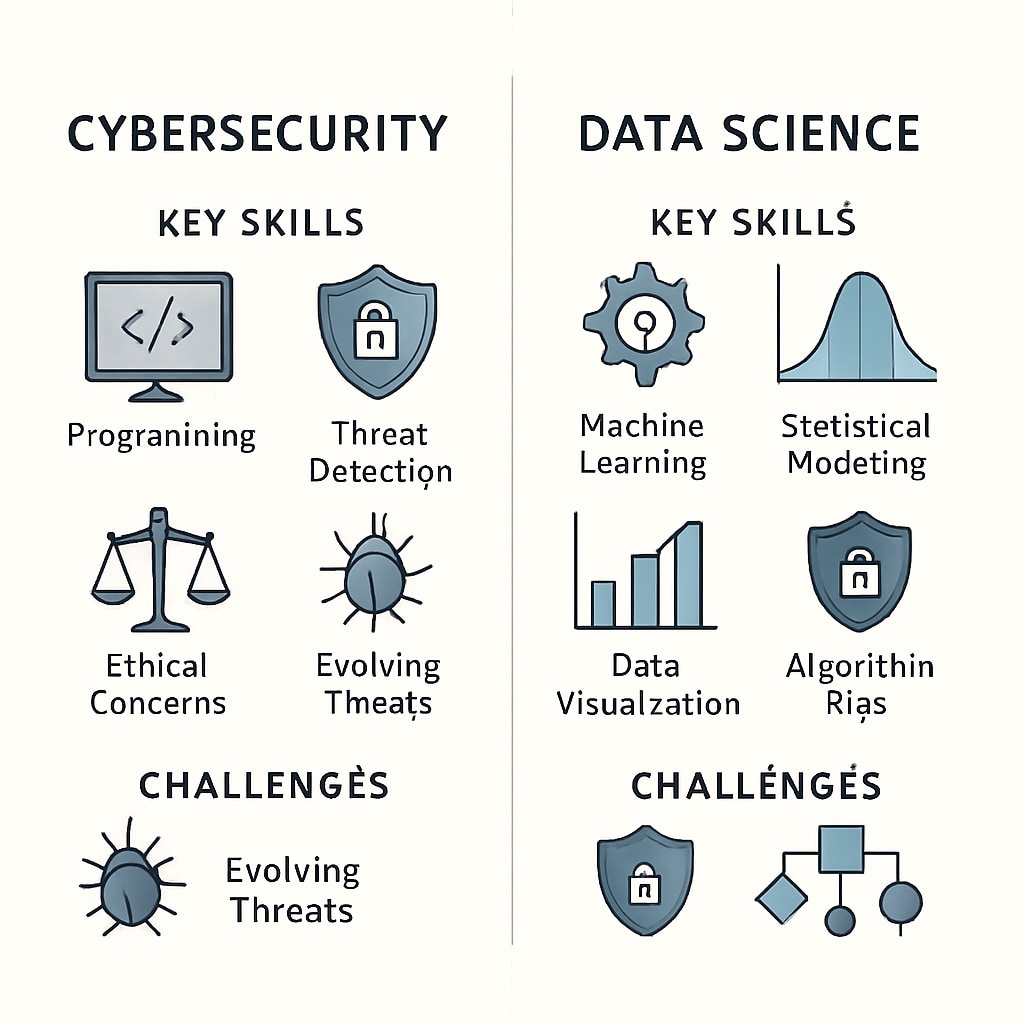In today’s digital economy, the demand for experts in cybersecurity, data science, and career choices has skyrocketed. These fields not only offer lucrative opportunities but also play critical roles in shaping technology-driven industries. For students, deciding between these career paths can be challenging. This article delves into the nature of each field, highlights their contrasting career prospects, and explores how K12 education can equip students with the foundational skills needed to excel in either discipline.
Understanding Cybersecurity and Data Science
Cybersecurity focuses on protecting sensitive data, networks, and systems from breaches and cyberattacks. Professionals in this field develop and implement strategies to safeguard digital assets, detect vulnerabilities, and mitigate risks. It’s a field tailored for those who thrive on challenges and value problem-solving under pressure.
Data science, on the other hand, is about deriving insights from vast amounts of data. It involves a blend of mathematics, statistics, programming, and domain expertise to analyze patterns, predict trends, and support decision-making. Data scientists often work in industries like finance, healthcare, and technology to unlock the potential of data-driven solutions.

Key Differences: Work Nature and Lifestyle
While both fields are highly technical, their day-to-day roles differ significantly. Cybersecurity professionals often work in high-stakes environments, responding to immediate threats and staying vigilant around the clock. This can lead to unpredictable work hours, especially during critical incidents.
In contrast, data scientists tend to have more structured schedules, focusing on long-term projects such as building predictive models or optimizing business processes. Creativity and analytical thinking are central to their work, making it ideal for those who enjoy exploring complex problems in-depth.
- Cybersecurity: High-pressure, fast-paced, and requires rapid decision-making.
- Data Science: Analytical, project-oriented, and demands strong attention to detail.
Career Prospects and Growth Opportunities
The career prospects for both fields are exceptional, but they cater to different interests and skillsets. Cybersecurity jobs, such as security analysts or penetration testers, are in high demand due to the increasing frequency of cyberattacks. According to a report by Cybersecurity Ventures, the global cybersecurity workforce gap remains vast, creating opportunities for skilled professionals.
Meanwhile, data science roles like machine learning engineers or data analysts continue to grow as businesses increasingly rely on data to drive decision-making. The U.S. Bureau of Labor Statistics predicts a 36% growth rate for data science jobs by 2031, as highlighted on BLS.gov.
Both fields offer competitive salaries, with cybersecurity experts earning an average of $112,000 annually and data scientists averaging $120,000, depending on experience and location.

The Role of K12 Education in Preparing Students
The foundation for successful careers in both cybersecurity and data science begins in the K12 years. Early exposure to STEM (Science, Technology, Engineering, and Mathematics) subjects is crucial, as these fields rely heavily on technical expertise.
For cybersecurity, K12 curriculums can include lessons on coding, ethical hacking, and digital safety, encouraging students to understand the importance of online security. Robotics clubs, coding competitions, and cybersecurity workshops can also spark interest in young learners.
In data science, introducing students to basic programming languages like Python or R, as well as data visualization tools, can help them develop analytical thinking skills. Schools can emphasize statistics and problem-solving exercises to build a solid foundation for future learning.
- Cybersecurity: Hands-on activities like building secure networks or identifying phishing attempts.
- Data Science: Encouraging creative projects, such as analyzing real-world data sets or predicting outcomes.
Final Thoughts: Choosing the Right Path
Ultimately, the choice between cybersecurity and data science depends on personal interests and career aspirations. Students who enjoy tackling immediate challenges and safeguarding digital environments may find cybersecurity more fulfilling. Meanwhile, those with a passion for uncovering insights and working with data are likely to excel in data science.
K12 educators and parents play a pivotal role in guiding students toward their ideal career paths. By fostering curiosity, providing early exposure, and encouraging exploration, they can help students make informed decisions in this ever-evolving digital age. Whether the future lies in protecting networks or analyzing data, both fields offer immense potential for growth and impact.
As the digital economy continues to expand, preparing the next generation for these critical roles is more important than ever. By investing in robust educational programs and nurturing talent early on, we can ensure a brighter, more secure, and data-driven future.
Readability guidance: This article uses short paragraphs, lists to summarize key points, and transitions like “however,” “as a result,” and “in contrast” to enhance readability. Each H2 provides a distinct focus, helping readers navigate the content easily.


